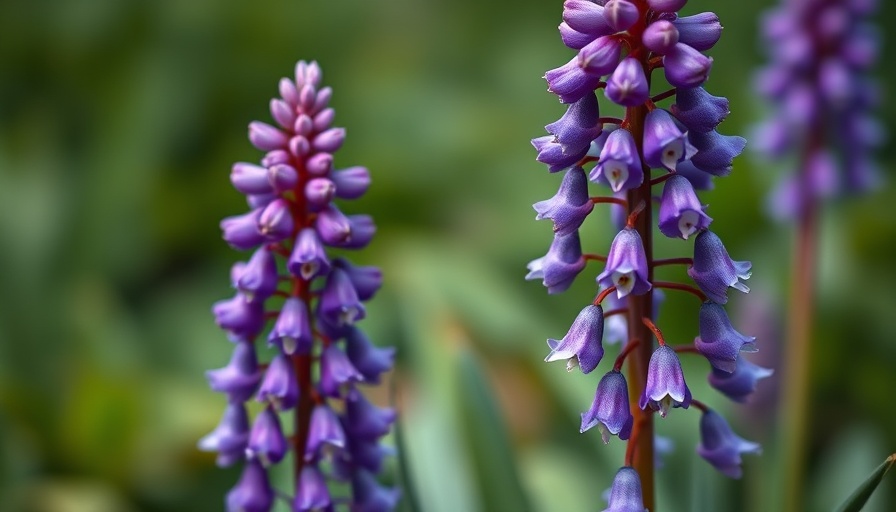
Caring for Grape Hyacinth: Post-Bloom Essentials
Grape hyacinth (Muscari spp.) is a beloved addition to spring gardens due to its bold, vibrant color and ease of care. Once the flowers fade after their stunning show, it can leave the planting looking a bit unkempt. However, with just a bit of post-bloom care, you can not only tidy up your garden but also ensure a healthier and more vigorous growth for future blooms.
The Importance of Deadheading
One of the first steps in caring for grape hyacinth after its flowering season is deadheading—removing the spent flowers. This step not only improves the appearance of your plants but also helps redirect the plant's energy back into root development rather than seed production. By doing this, you set the stage for even more bountiful blooms come spring.
Understanding Water Needs
In the weeks following flowering, grape hyacinths will naturally require less water. As they prepare for dormancy, it's essential to allow the top layer of soil to dry out between watering sessions. Test the moisture with your finger; watering can be avoided entirely once the foliage begins to die back, as the plant conserves energy.
Feeding with Bone Meal: A Nutritional Boost
To enrich the soil after flowering, consider applying bone meal. This fertilizer is rich in phosphorus, a key nutrient that supports robust flowering. Depending on your local soil conditions—like those of the nutrient-dense soils found in Oregon's Tualatin Valley—you can determine the right amount to apply. Bone meal usually has an NPK (Nitrogen, Phosphorus, and Potassium) ratio of around 3-15-0, making it an excellent choice to replenish nutrients after blooming.
Pruning for Health and Aesthetics
After blooms fade and leaves start yellowing, thoughtful pruning can help prevent overgrowth and maintain garden health. Trim back any dead or damaged foliage to improve air circulation and reduce the risk of disease, all while keeping the garden looking fresh. This simple act can make a significant difference in promoting vigor as the plants prepare to go dormant.
Bringing Grape Hyacinth Indoors
If you grow grape hyacinth indoors, similar principles apply. After flowering, allow the plants to continue growing in low light with minimal water until it's completely finished with its growth cycle. They make beautiful indoor plants during their blooming period but require a little management afterward to thrive.
Embracing the Lifecycle of Grape Hyacinth
Caring for grape hyacinth after flowering is a reminder of the beauty of lifecycle management in gardening. As these plants fade, it’s essential to step in with care—removing spent blooms, managing moisture, and feeding them right—ensuring that they not only survive but thrive for many springs to come. By understanding the specifics of grape hyacinth's post-bloom needs, you cultivate not only plants but a relationship with your gardening space.
Conclusion: The Gift of Sustainability
Caring for your grape hyacinth after blooming offers a chance not just to promote its health but also to connect deeper with your gardening practices. Every step you take strengthens your skills as a gardener, contributing to a beautiful and sustainable garden ecosystem. As you enhance your plant care routine, know that you are not just nurturing flowers but also enriching your environment for the seasons to come.
Discover the joy of home gardening! Incorporate these tips, and take action to nurture your grape hyacinth and other plants in your garden today.
 Add Row
Add Row  Add
Add 




 Add Row
Add Row  Add
Add 

Write A Comment